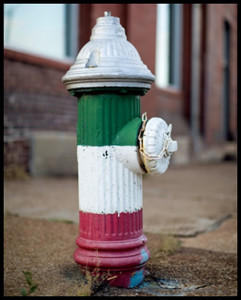

Starting a business is the often told story of the immigrant’s dream of coming to America.Īnd, as it so happens, during Peter’s search he discovered that there was another Asian-American history story and connection with this building. Peter’s father, Tao Kwang-Yeh (later William, or Bill to many) and mother Guo Yu-Tsai (later Anne) started up their first business, an engineering firm in this exact building, in 1955. Louis history crossed paths with this building in the 1950s, so Peter was searching for some answers. Louisan and Chinese-American, recently dealt with his parent’s passing.

He happened to be researching some family history, as well as Chinese-American history as part of a Missouri Historical Society Collection Initiative (more about this later). Let the larger citizenry weigh in on why these buildings are important before they are stripped from our landscape and history.Ĭase in point: Peter Tao, a local architect from TAO + LEE, reached out to me to ask if I knew about the Grandview Arcade’s history. It’s not the buildings themselves that are the problems though, it is usually the gross abandonment, neglect and neighborhood decline at all levels.īut it’s not just the local politicians and groups of locals who should have a say on whether a building is razed. Homeless people, drug dealers, street sex workers, squatters, graffiti taggers…the list goes on from those who seek short term solutions: get rid of it, it’s too far gone, they will tell you. So much goes with the mindless, short-sighted destruction of buildings. Those blocks look better than they have in maybe twenty years.īut, I’m here today to write about why destruction and demolition, taking place at staggering rates in parts of our city, mostly North City, are hurting us as people and as a city. Look no further than the work they have done along South Kingshighway just north of Chippewa. They are doing amazing work in our city, by the way. Luckily, it was purchased by Garcia Properties, who intend to rehab it and return it to mixed use. I went to the Pizza A – Go – Go restaurant when I first moved here. We are now left with a less than desirable White Castle, KFC and Walgreens…all with surface parking lots and low density drive throughs a la the suburbs all across America.īack to the Grandview Arcade building: I know it’s important, I know it’s beautiful, I know it’s in a tough section of the neighborhood. These were destroyed not long after the photo below was taken for the suburban ideals of the time: drive through fast food. There was also a set of beautiful buildings on the northwest corner of Grand and Gravois. Read Vanishing STL for an excellent entry on the saga of this building. 3708 South Grand BoulevardĪ new building was erected here, urban in form, arguably useful for the neighborhood, but so much deco architecture and sense of place lost. This 1920s art deco beauty was sent to the landfill for the lust for modernization. It was once a teeming shopping area when a Sears (one of two in St. I used to go to a Greek diner just south of here in the mid-1990s. This section of South Grand, just south of Gravois has evolved over the years and has been part of my real life and online reading for years. I’ve written about this a couple times, back in 20. I am speaking of the Grandview Arcade, or Melba Theater building at South Grand and Miami Street in the Gravois Park Neighborhood. Louis, and reading about development on NextSTL and CitySceneSTL. I knew of this building from research on lost cinemas of St. I had someone reach out to me who was interested in a building at 3600 South Grand. It’s essential reading for the open minded. Louis from a white person’s perspective, to balance the historic narrative on that part of town. Just read Tales of a Talking Dog for a lesser told history of the emptying out of North St. Sometimes the stories of the less represented are the most fascinating and the perspectives I crave. The more I read, the more I know how incomplete historical documents are without these stories. The lost perspectives of people with alternate recollections of history are sometimes the most enlightening. I’m a story junkie and couldn’t agree more. The following stuck with me: “More people are looking to tell the stories of underrepresented communities, document and protect vernacular architecture, preserve sites of the recent past, and promote the protection of intangible heritage.”


 0 kommentar(er)
0 kommentar(er)
